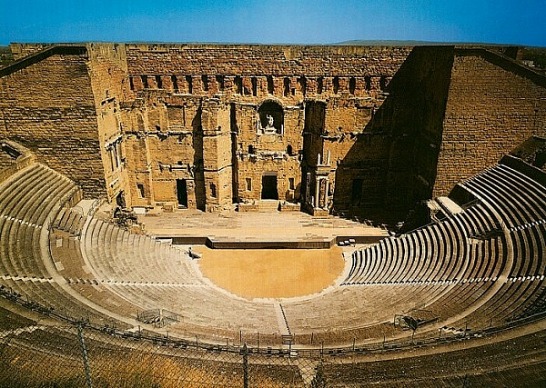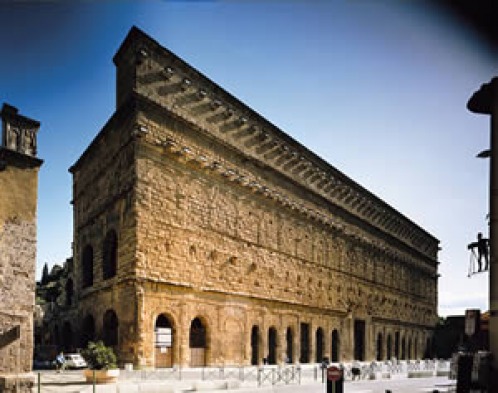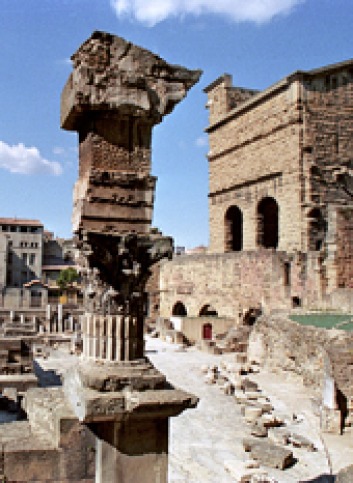Welcome to Orange
This architectural masterpiece was built in the first century A.D. This theater is loaced in southern France, will seat 10,000 people, and is still used in 2010 for Operas! Isn't it amazing how something so old can still be used today?
The Theater
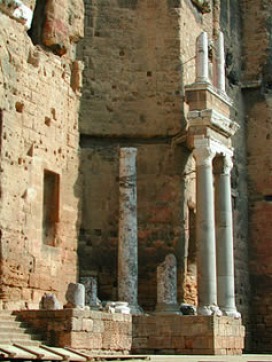
Roman theaters were HUGE because they were to accommodate large numbers of people. Ironically, they didn't start building these masterpieces until after they started creating their theater. Instead, they performed in temporary structures.
The Theater at Orange was no exception!
Look at the large rock theater. Did you know that during the middle ages it was used as a defensive post? During the sixteen century religious wars it was used as a place for the townspeople to hide.
If you were to see this place where we come from, 2010, you would see that the top of the theater is decaying, and you would see that all of the seats have been replaced. But since we are here right at the time it was in its peak, you can see the wooden seats and the beautiful rock work.
The Theater at Orange was no exception!
Look at the large rock theater. Did you know that during the middle ages it was used as a defensive post? During the sixteen century religious wars it was used as a place for the townspeople to hide.
If you were to see this place where we come from, 2010, you would see that the top of the theater is decaying, and you would see that all of the seats have been replaced. But since we are here right at the time it was in its peak, you can see the wooden seats and the beautiful rock work.
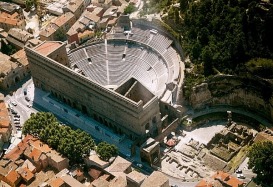
This is the only theater in 2010 where the beautiful stage wall is still intact!
Can you see how well it is built?
This isn't the only theater that is still surviving. Did you know that during the time of the Roman Empire, multiple theaters were built? This isn't the only surviving one either. There are surviving theaters in other diverse locations like Libya and Israel.
Be sure to pay attention to where the curtain goes, as well as the fact this theater isn't built on a hillside. We will be discussing this theater and the differences you see between Greek and Roman theater when we are done touring!
Can you see how well it is built?
This isn't the only theater that is still surviving. Did you know that during the time of the Roman Empire, multiple theaters were built? This isn't the only surviving one either. There are surviving theaters in other diverse locations like Libya and Israel.
Be sure to pay attention to where the curtain goes, as well as the fact this theater isn't built on a hillside. We will be discussing this theater and the differences you see between Greek and Roman theater when we are done touring!
History
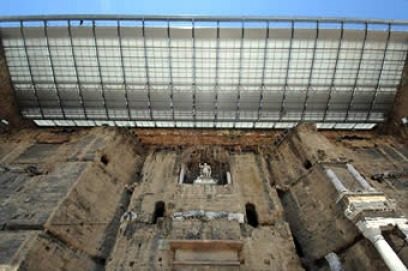
Orange was a Roman Colony founded by veterans of Caesar's second regiment in 40 B.C. Unfortunately, this theater suffered the same fate as the Roman empire in the 4th Century A.D. After that, it was plundered and pillaged, and used as a place of defense. It wasn't until the 19th century that the theater got the TLC it had been lacking. In 1825 the seats were restored. Since then, the theater has been taken care of. In 2006 the theater was given a new roof.
The new roof is made out of glass, not wood, so it is lighter. And it doesn't sit on the theater itself, but a crossbeam. This is to protect the aged theater stone. The roof was also tastefully done. It can't be seen from angles outside of the theater. It was built to preserve the acoustics of the theater, but it doesn't overpower the ancient theme running through this Roman masterpiece.
The new roof is made out of glass, not wood, so it is lighter. And it doesn't sit on the theater itself, but a crossbeam. This is to protect the aged theater stone. The roof was also tastefully done. It can't be seen from angles outside of the theater. It was built to preserve the acoustics of the theater, but it doesn't overpower the ancient theme running through this Roman masterpiece.
